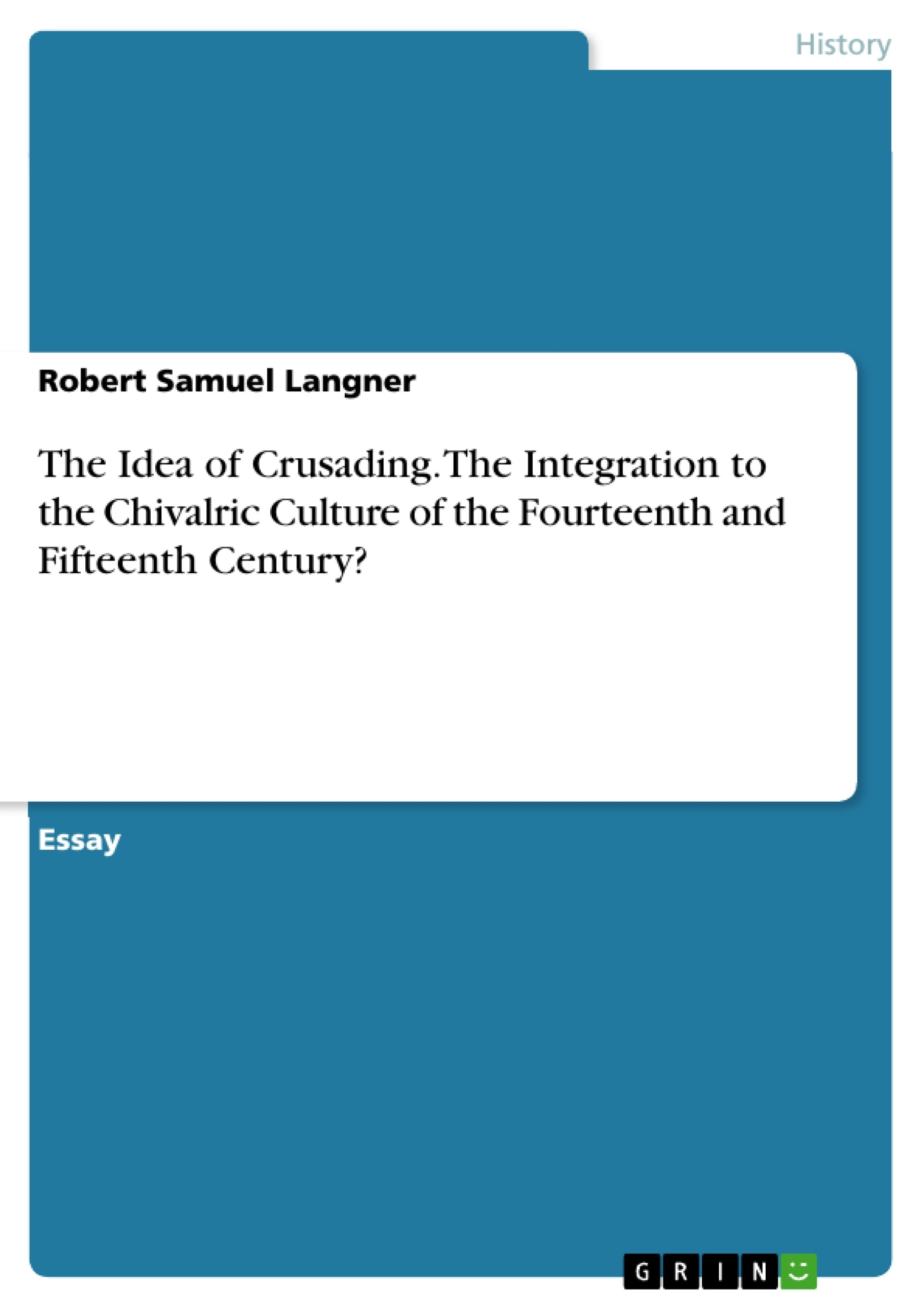The paper answers the question how the idea and the concept of the Crusade in the late Middle Ages of the 14th and 15th centuries played an integral role in the idea, or rather in many different ideas, of chivalry in Europe, it is necessary to first define explanatory approaches. First, the explanations as well as conclusions in this essay are based on this understanding of the concept of crusading, and what ideas and intentions were used to legitimize and justify it in general. Therefore, the general concept of chivalry in late medieval Europe will be discussed, with an overview of what has been understood in the past, and what we now understand today. Finally, these analyses will be brought together to identify any socio-cultural and conceptual overlaps in the duration of the Middle Ages. Thus, an interpretative sense for the complex topic of chivalric culture and the idea of crusading, or the scientific-academic problematization of their context should be formulated.
Inhaltsverzeichnis (Table of Contents)
- Essay Question: To what extent did the idea of crusading remain integral to the chivalric culture of the fourteenth and fifteenth century?
- The Concept of Crusade in Late Medieval Europe
- Etymology and Conceptual Development of the Term "Crusade"
- Definition of Crusades in History
- The Rise of Islamic Expansion
- Motivations for Participation in Crusades
- Theological Foundations of the Call to Crusade
- Theological Basis for the Crusades: The Just War
- Religious and Economic Motivations
- The Crusades and Chivalric Culture
Zielsetzung und Themenschwerpunkte (Objectives and Key Themes)
This essay examines the extent to which the idea of crusading remained integral to the chivalric culture of the fourteenth and fifteenth centuries. It explores the concept of crusading in late medieval Europe, analyzes the motivations behind participation, and investigates the connections between crusades and chivalry.
- The evolution of the concept of "crusade" and its conceptual development
- The motivations behind participation in crusades, encompassing religious, economic, and political factors
- The role of chivalry in crusading, particularly the intersection of religious piety and military action
- The impact of crusades on the political landscape of late medieval Europe
- The changing nature of crusades and the decline of their popularity in the late Middle Ages
Zusammenfassung der Kapitel (Chapter Summaries)
- The essay begins by defining the term "crusade" and tracing its conceptual development. It outlines the various ways in which the concept evolved and highlights the different motives for participation.
- Next, the essay examines the historical context of crusades, particularly the expansion of Islamic influence and the reconquest of the Holy Land. It discusses the motivations for participation in these campaigns, highlighting the blend of religious, economic, and political factors.
- The essay then explores the theological foundations of the call to crusade, focusing on the concept of the "just war" and its influence on the chivalric culture of the time.
- Finally, the essay delves into the relationship between crusades and chivalry, demonstrating how the ideals of honor, religious piety, and militant support for the faith intertwined within the context of crusading.
Schlüsselwörter (Keywords)
The key themes and concepts explored in this essay include the Crusades, chivalric culture, religious motivations, economic factors, political power, just war, and the evolution of the concept of crusade. The essay also examines the intersection of these themes within the context of late medieval Europe.
- Quote paper
- Robert Samuel Langner (Author), 2018, The Idea of Crusading. The Integration to the Chivalric Culture of the Fourteenth and Fifteenth Century?, Munich, GRIN Verlag, https://www.grin.com/document/949545



